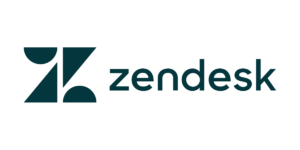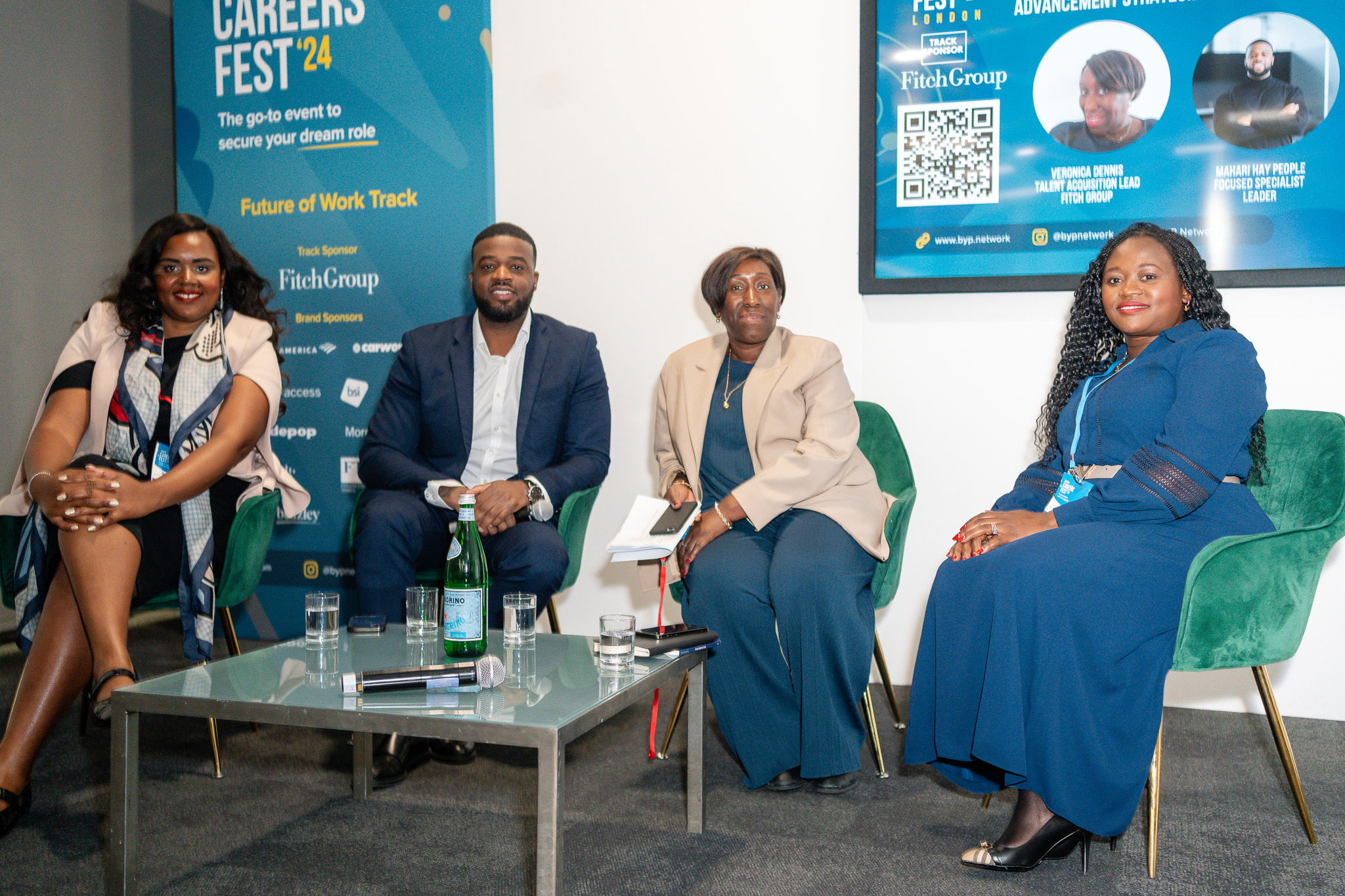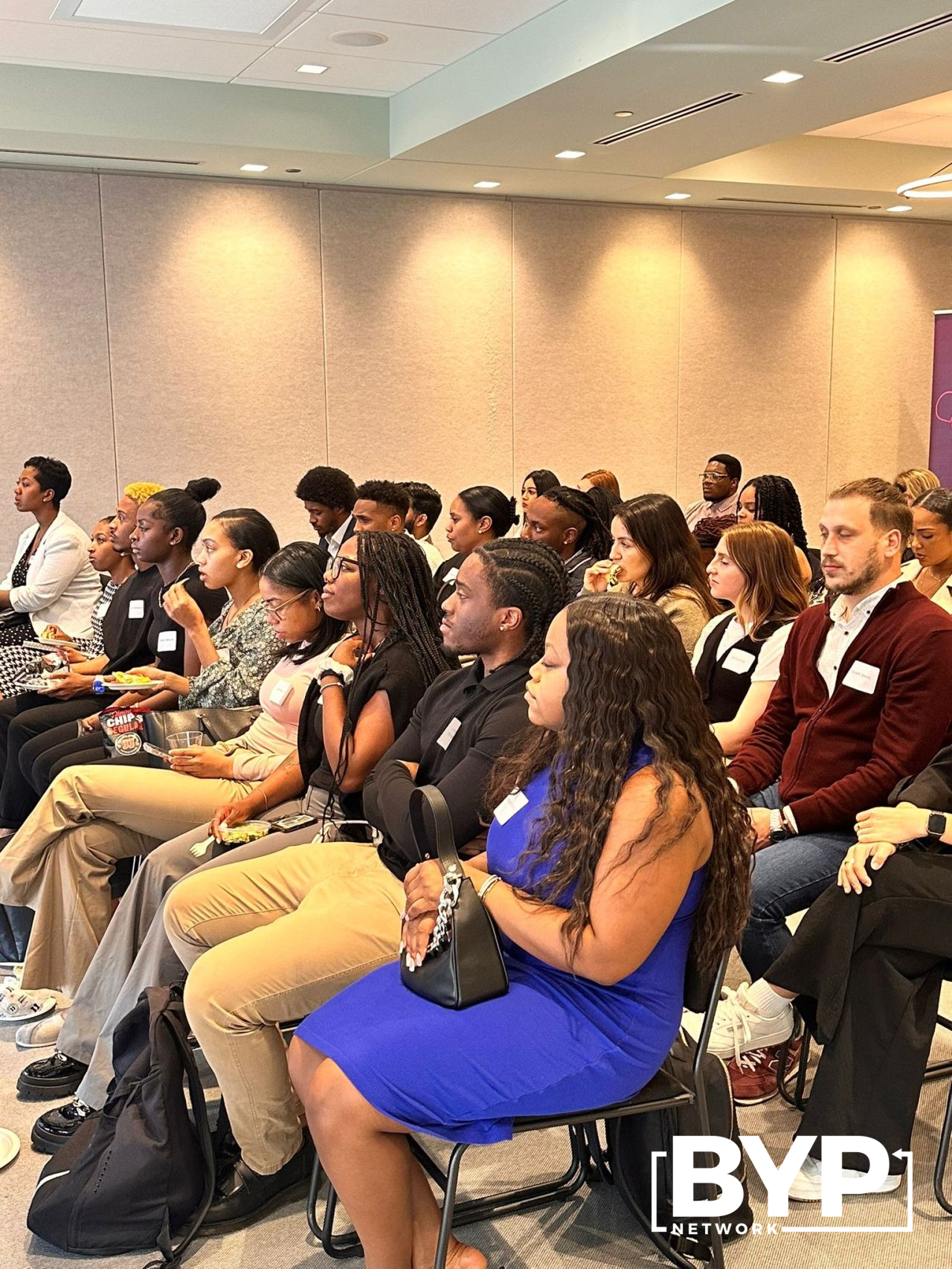Diversity, equity and inclusion are all different roads; the point at which they intersect is justice.” Passionate about the welfare and social inclusion of those from underrepresented communities, Marcus Cooper who was the Director of Global Diversity & Inclusion candidly whilst at Zendesk candidly shared his story with BYP. His experiences and observations throughout his career have equipped him with the technical and social knowledge regarding making a change in underrepresented communities. Through candid recollections, accompanied by practical advice, Marcus shares how he came to work at Zendesk, his global role as a Director and why knowing your ‘why’ serves as the ultimate anchor in any industry.

HIS JOURNEY
Talking about his journey is both humorous and nostalgic as Marcus illustrates the map of this career start. Having completed a Business degree, he laughs as he confesses not having any idea of where he wanted to take the degree but had an innate feeling it was the best shot towards success, especially in the corporate world. After experimenting in New York real estate, and dabbling in brand marketing and advertising, Marcus would come to land his first full-time position with a staffing company based on tech & software focus in San Francisco. This moment in time would come to transform Marcus’ career focus and, ultimately, his trajectory. “This role showed me the importance of what it means to have equal opportunities and build generational wealth. It’s amazing how transformative a job can be when we talk about closing the wealth gap.”
His perspective regarding the recruitment of those from underrepresented communities took shape after realising it was the same type of people that were being hired. He lists the conservative criterion used to select these employees, such as having attended a top/private school and gained startup experience prior. “I remember thinking gosh! Are these companies just looking for carbon copies of the same talent profile?” The realisation of it would fuel Marcus with new intentionality when he was finally allowed to contribute to the recruitment process. “I was intentional about hiring female candidates, black and brown candidates and generally underrepresented individuals.”
Marcus explained how the establishment adopted an ‘inclusion theory.’ This notion would encourage people from all backgrounds to apply regardless of their experience. “We would tell people if you’ve worked at Starbucks, you’d be a great hire’ he laughs, explaining that the aim was not to exclude people based on experience. Instead, the objective was to highlight the soft skills such candidates had, such as customer-centricity and creating a positive experience. In turn, by giving such individuals access, the establishment began to see an influx of diverse candidates, with Marcus eventually receiving email testimonials about how being given a chance at this establishment had changed their lives and given them the courage to pursue other endeavours. Getting emails that said “I have to thank you, I would have never gotten access if it wasn’t for you” made me realise that I needed to make this a part of my story and my role. This is what served as my entry point into all things Global diversion and equity.

Marcus’ passion and aim to extend opportunities towards diverse talent would lead him to software giant Zendesk, an establishment that believes everyone should bring their whole selves to work. Diversity and inclusion is a role that extends toward everyone. He emotively talks about what it means to be a D&I leader and addresses the fears that come from saying the wrong thing, especially with the rise of social media. “There’s a deep fear of being labelled racist, sexist or homophobic and in turn prohibits people from actually stepping in and owning the responsibility concerning D&I.” He iterates that it is essential to help leaders understand their motivations and why they should continue this work, even on their darkest days.
“It’s about asking yourself, how do we create an environment at work so that the matter of inclusion no longer feels like an add-on or a laundry list of what needs to be changed, but rather, an integrated strategy that aligns with our business objectives. We need to set the tone as to how the leaders show up from the beginning, such that effective and inclusive leadership can become part of our DNA and accelerate our progress. We’ve worked really hard at Zendesk to build programs, policies and systems that are sustainably equitable and we’re seeing the impact it has on the employee experience. It’s great to be at the forefront of this work.”
IT IS EVERYONE’S JOB
Being at the forefront of any noble cause often takes much responsibility and hard work. With the rise of employee resource groups, frameworks and quarterly objectives to demonstrate that specific working environments are becoming more inclusive, such responsibility can often be shifted onto one person. Sharing his thoughts on such duties, Marcus illustrated that the key is creating an effective enablement plan. “Most leaders don’t have a deep understanding of complex topics like psychological safety or social justice – or even how the intersection of certain identities can influence the experience and productivity of their teams. The idea is that by creating an enablement plan (complemented by dedicated coaching and support), leaders can build their inclusive leadership toolkit and, over time, independently own the delivery of functional DEI plans. That’s our vision for this work – a leader-led DEI model that gives leaders the power to build and sustain belonging at the team level.
When speaking about teams and the support Zendesk offers, Marcus lights up when detailing the company’s attitudes and measures regarding such vital issues. The first stop is allyship. Allyship, whether corporate or social, requires education and genuine concern for the matter at hand. In a world where people can feel pressured to speak up about social injustices and other issues, the line between authentic and performative allegiance is fragile. In light of this, BYP has since hosted the webinar Refining the Do’s and Don’ts of Allyship, highlighting the best ways corporations can best navigate their activism. Marcus elaborates on the topic further, iterating that allyship involves taking action. “Allyship is a verb, and we believe this wholeheartedly at Zendesk. Our senior leaders are constantly in touch to communicate and listen to our employees every step of the way.” He lists the additional measures Zendesk takes to support employees, such as empathy circles, mental health benefits and strategic partnerships.
“What I particularly love about Zendesk is the organic ownership and accountability at the highest level around D&I work. It just ensures our corporate strategy has unequivocal language on the ground.” It is this same ownership that led to Zendesk partnering with BYP. “We want to create a safe space for our employees to thrive. We look for partners that are intentional and laser-focused on impact. We look for partners that we can elevate with and support. So in many ways, we hit the sweet spot with BYP.” Describing the Zendesk and BYP partnership as a beautiful opportunity, he expresses that it ‘feels good to get in early with a mission that is both aligned and additive.’
His business prowess creeps in as he describes the concept of diversity and inclusion as a bank. “We have to think about inclusion as a bank; every act of inclusion is a deposit, whereas every act of exclusion, whether micro or macro, is a withdrawal. It only takes one act of exclusion to drain the account. The second the trust is broken, there is nothing left in your inclusion bank. You have to start again.” He concludes his metaphor by mirroring ‘overdraft protection and automatic deposits’ with sustainable inclusive behaviours that are operationalised – cultural even.

PRACTICAL ADVICE
Marcus shares his practical tips with those who are leaders of diversity in their companies or are simply ready to make a progressive change.
1. PRIORITISE YOUR MENTAL HEALTH
Prioritise your mental health and your emotional well-being. Working in D&I can be very labour intensive. As practitioners, We spend a lot of time absorbing the energy and emotions of others and then try to translate that into positive action. Because we are constantly responding to our environment, we can best serve our population when we take care of ourselves.
2. REMEMBER YOUR WHY
It’s easy to get swept away by opinions and narratives and forget why you are doing this. When you have hard and exhausting moments, you need something to anchor you. Marcus explains that his why is rooted in his identity as a parent, a black man, and a queer black man. “I am surrounded by loved ones who are at different stages in their lives. I try to imagine a world where they can exist at work as their full selves and feel safe and successful. This is what serves as my cornerstone that keeps me engaged with work and keeps the fight alive.”
3. BE COURAGEOUS.
Don’t be afraid to ask for what you need. You are a human, performing at a job, so don’t be afraid to ask if you need something to feel whole at work. It is the only way you will be able to sustain yourself
4. SEEK OUT MENTORSHIP & OPPORTUNITIES.
Be intentional about mentorship and sponsorship, be proactive and seek out life opportunities. It will take you far. Be persistent and clear on what you need, and people will help you.
5. DON’T WORRY ABOUT OTHER PEOPLE’S BEHAVIOR.
Most of the behaviour of others has nothing to do with you. Remember to acknowledge your power and how special you are. What others say or do that is hurtful has nothing to do with you. There are times when you have to be your own cheerleader. We have a responsibility to help shape the path for those who are coming up right behind us.

If you would like to learn more about Zendesk and the steps they are taking to build an even more progressive workforce, please visit their BYP employer profile page here.






